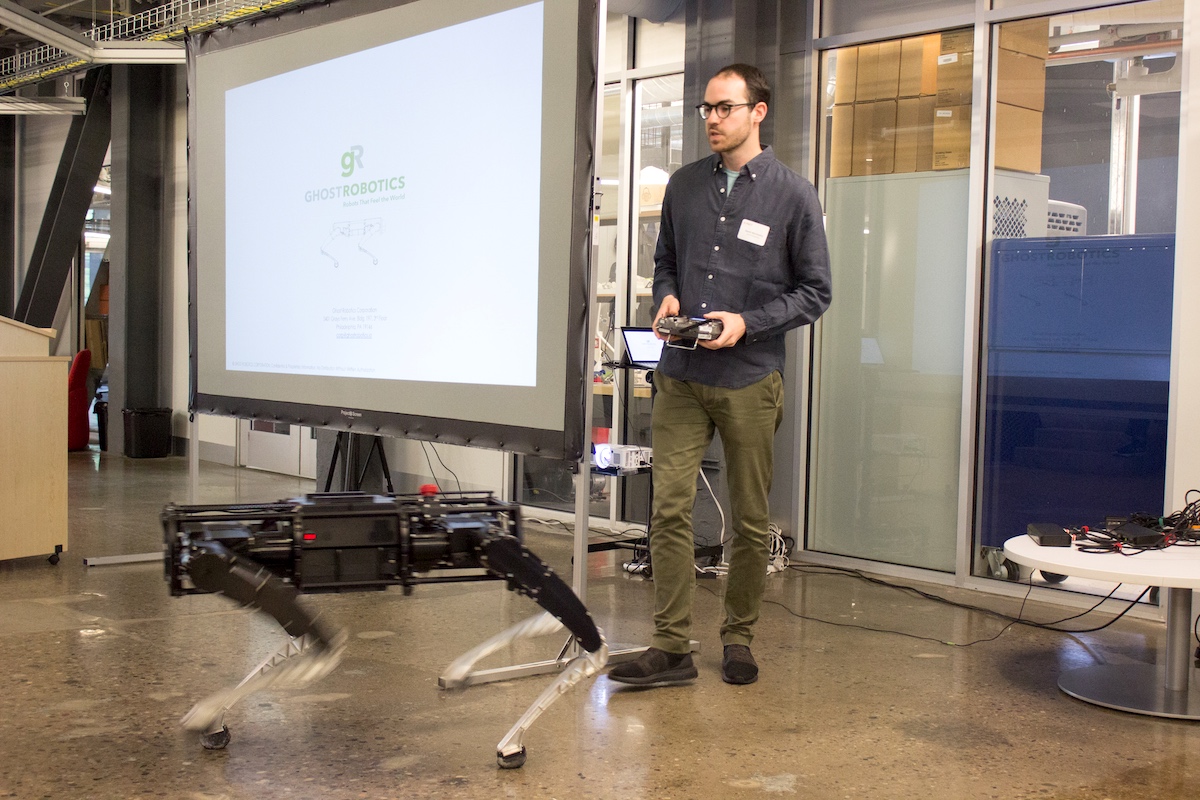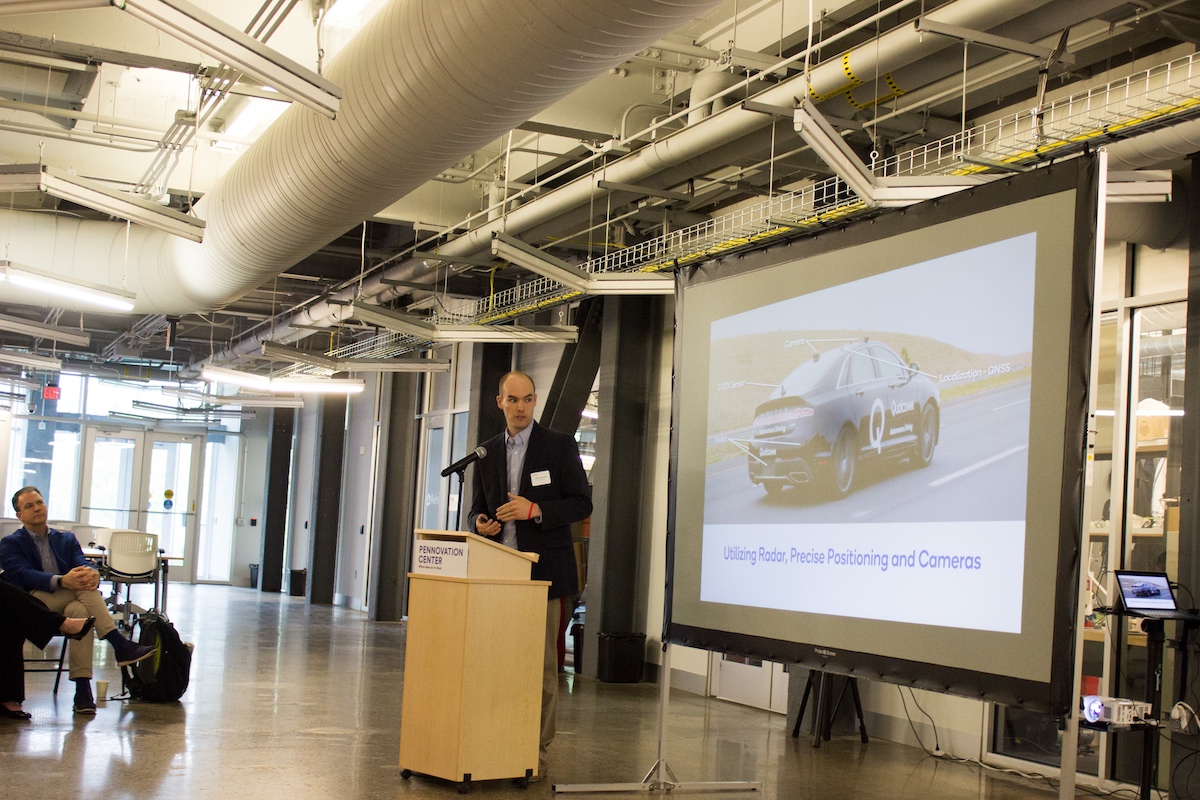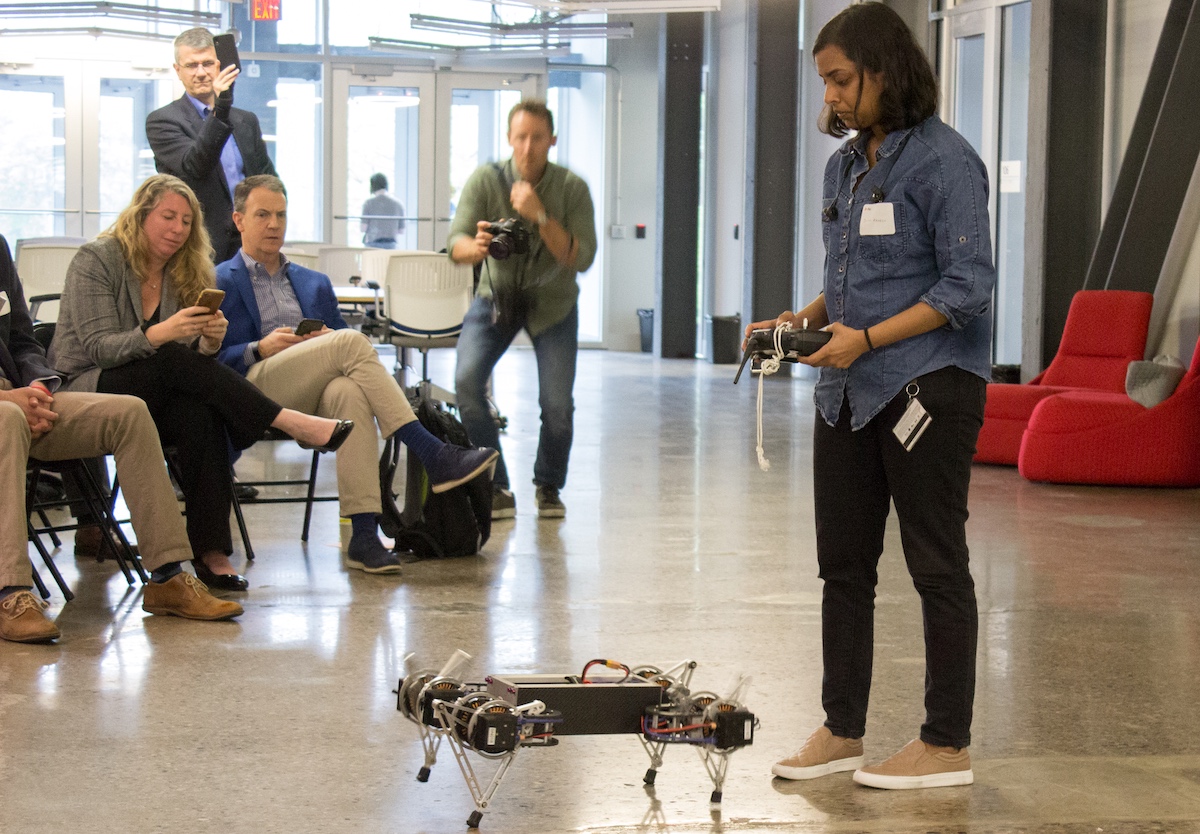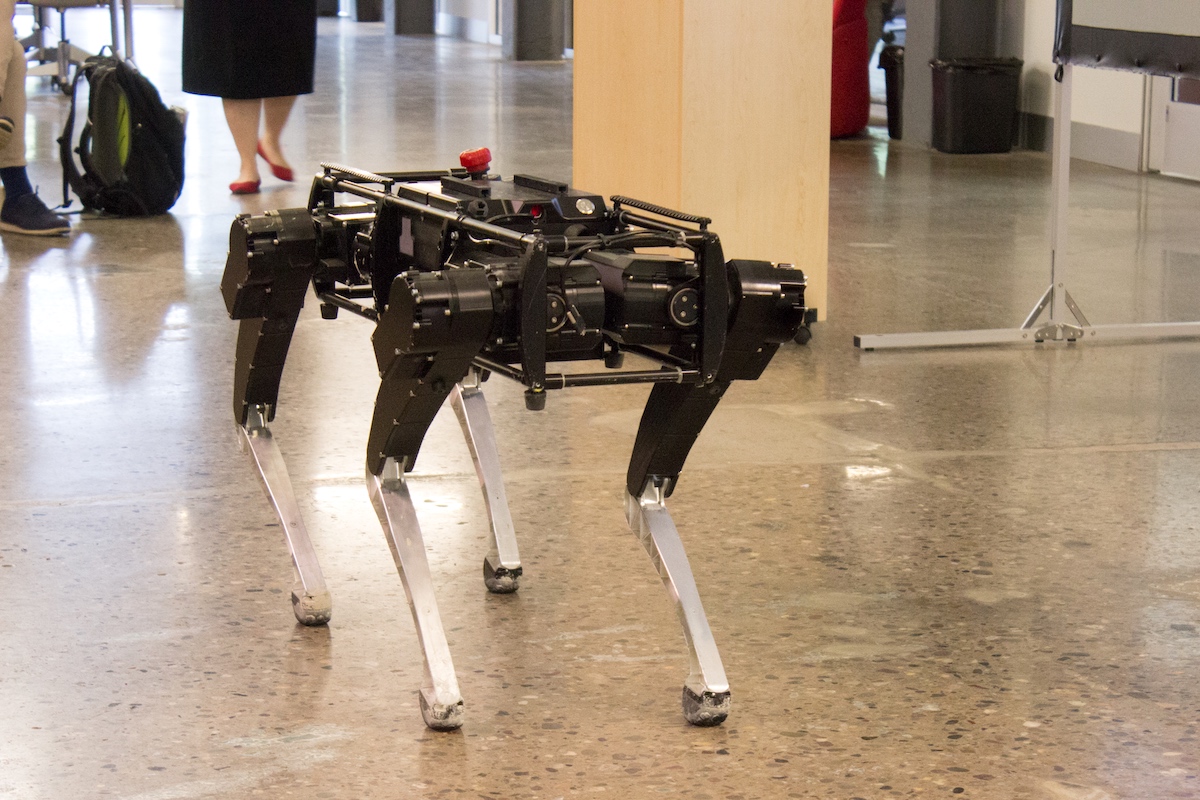Celebration is critical and today we’re celebrating robots, Dean Miller said to the crowd gathered in Pennovation Center, the University of Pennsylvania’s research hub in Grays Ferry on Wednesday morning.
“Sometimes when you think about robotics, you think about MIT, you think about [Carnegie Mellon University], you think about Stanford,” Miller, president and CEO of Philadelphia Alliance for Capital and Technologies (PACT) told Technical.ly. “But the truth is, there’s amazing work going on in robotics here at Penn.”
More than 100 people attended the Philly Tech Week event, which was hosted by Penn Center for Innovation, the university’s tech transfer arm, and PACT, the regional business association focused on emerging tech and healthcare companies.
The presenter’s demos and videos elicited a range of emotions from the crowd. Here’s what the minds at Pennovation are working on — and some moments that stood out.
Whenever Ghost Robotics’ legged robot did anything
The GR Vision 60, a 65-pound legged robot, just looked like a flat, rectangular piece of metal. But when Gavin Kenneally, chief product officer at Ghost Robotics, turned the robot on, its legs sprang up and it began walking around the room. Almost everyone in the crowd had their phone raised to capture the moment.
“They’re really able to get over all kinds of rough terrain and go upstairs and things like that to move around in the environment,” Keneally told Technical.ly. “We’re really working to make legged robotics a commercial reality.”
The company, which is housed in Pennovation Works, improves the robot on a quarterly cycle from customer feedback. The robot can be used for a variety of markets including industrial, military and public safety.
Keneally also showed videos of the robot flipping over on its back, following a person and walking on different terrains like snow. During the Q&A, Keneally assured the crowd that the robots haven’t been weaponized. So, we’re all safe for now.

Gavin Kenneally operating the GR Vision 60. (Photo by Zari Tarazona)
Qualcomm’s autonomous car in the fast lane
Daniel Mellinger, director of engineering at Qualcomm Research Philadelphia (QRP), said the research and development group isn’t trying to join ride sharing or make its own brand of cars.
QRP, a division of Qualcomm Technologies, Inc., is developing full-stack technology for autonomous vehicles. The company plans to sell the technology to manufacturers in the future.
Mellinger, who joked he couldn’t bring the vehicle inside, showed a video of a Qualcomm autonomous car driving on highways in San Diego. The vehicle navigates with the help of sensors, camera perception, radar, behavior prediction and requests from the passenger.
The team has been testing the technology with a fleet of cars in California, including its fast lanes to show lane change capabilities (sorry Cali drivers, the vehicle doesn’t break the speed limit). Another car is tested in a closed race track an hour out of Philadelphia.

Daniel Mellinger showing a video of a Qualcomm autonomous car driving on highways in San Diego. (Photo by Zari Tarazona)
The Ghost Minitaur’s gaits
Divya Ramesh talked about her work in the Kod*lab, which is located in Pennovation Center’s Penn Engineering Research and Collaboration Hub, also known as PERCH. Ramesh, a second-year master’s student in electrical engineering at Penn, presented Ghost Minitaur to the crowd.
The legged robot, which was inspired by four-legged animals, uses a trot and bound gait to walk two meters per second. Ramesh said the trot gait is when one pair of the legs diagonal from each other move in sync, while the bound gait is when the front legs move in sync.
“The reason why I like doing this work is because I feel like this is something that we need to focus on,” said Ramesh, who thinks legs are better than wheels when it comes to robots. “A lot of robots do not actually have legs.”

Divya Ramesh operates Kod*lab’s legged robot. (Photo by Zari Tarazona)
Kumar Lab’s drone and a hula hoop
Mickey Whitzer showed some of his favorite videos of drones flying through a falling hula hoop and flying autonomously through a building to find a bright red barrel.
Whitzer, a Ph.D. student in mechanical engineering, works under Nemirovsky Family Dean Vijay Kumar in Penn’s GRASP Lab where the research group is located.
“I really love math and physics,” Whitzer said. “I also like programming, and so robotics is a great mix of all of that.”

Mickey Whitzer of Kumar Lab shows drone videos. (Photo by Zari Tarazona)
ModLab’s modular robots sticking together
Chao Liu closed out the celebration with videos of modular robots, which looked like a centipede made out of building blocks when joined together. Liu, a Ph.D. student at Penn, was representing the work done by ModLab, which is also housed in PERCH.
The crowd chuckled when the modular robots broke apart and then reconfigured again and laughed incredulously when the robots formed a bridge in a pool.
Join the conversation!
Find news, events, jobs and people who share your interests on Technical.ly's open community Slack

Philly daily roundup: East Market coworking; Temple's $2.5M engineering donation; WITS spring summit

Philly daily roundup: Jason Bannon leaves Ben Franklin; $26M for narcolepsy treatment; Philly Tech Calendar turns one

Philly daily roundup: Closed hospital into tech hub; Pew State of the City; PHL Open for Business


